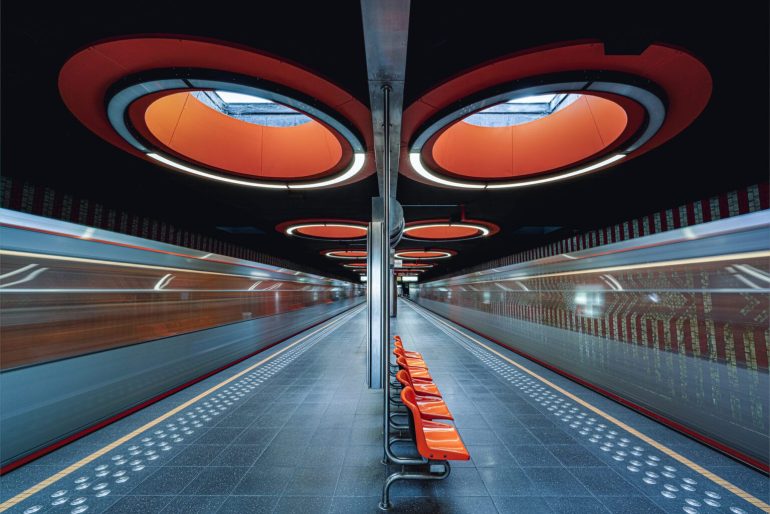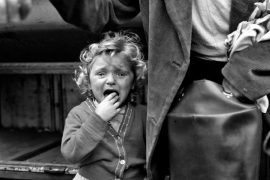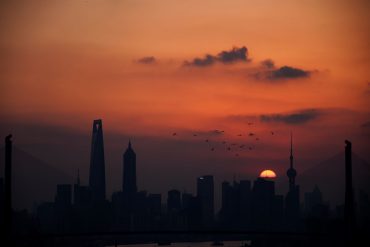Throughout humanity’s long journey of exploration, photography has played a unique role. It is not merely a tool for documentation but a medium for discovery. From the symmetrical aesthetics of European subway stations to unknown plankton in the ocean depths, from absurd chance encounters on city streets to the intricate structures inside musical instruments and scientific apparatus, four photographers use their lenses to show us beauty and meaning across different dimensions of our world.
These works transcend pure aesthetic pursuit, revealing complex and subtle relationships between humans and their environment, tradition and innovation, order and chaos. This article will analyze the common themes behind these photographic projects, exploring how photography serves as a way of understanding the world and what this visual exploration reveals about contemporary society.
Architectural Photography: Frozen Poetry Beneath Cities
Thibault Drutel’s series on European subway stations presents a unique form of urban visual archaeology. Moving through underground spaces in Berlin, Munich, Stockholm and other cities, he captures architectural details often overlooked by hurried commuters. To him, these stations are not mere transit points but “silent narrators” telling stories about intention, history, culture and function.
Featured: Pannenhuis, Brussels. All images © Thibault Drutel, shared with permission

Josephsburg, Munich
Through Drutel’s lens, the geometric lines of Berlin’s Überseequartier station converse with the color contrasts of Stockholm’s Solna Centrum, while the symmetrical structure of Munich’s Georg Brauchle Ring station echoes the lighting effects of Berlin’s Paulstern station. Together these images form a visual chronicle of modern European urban development.
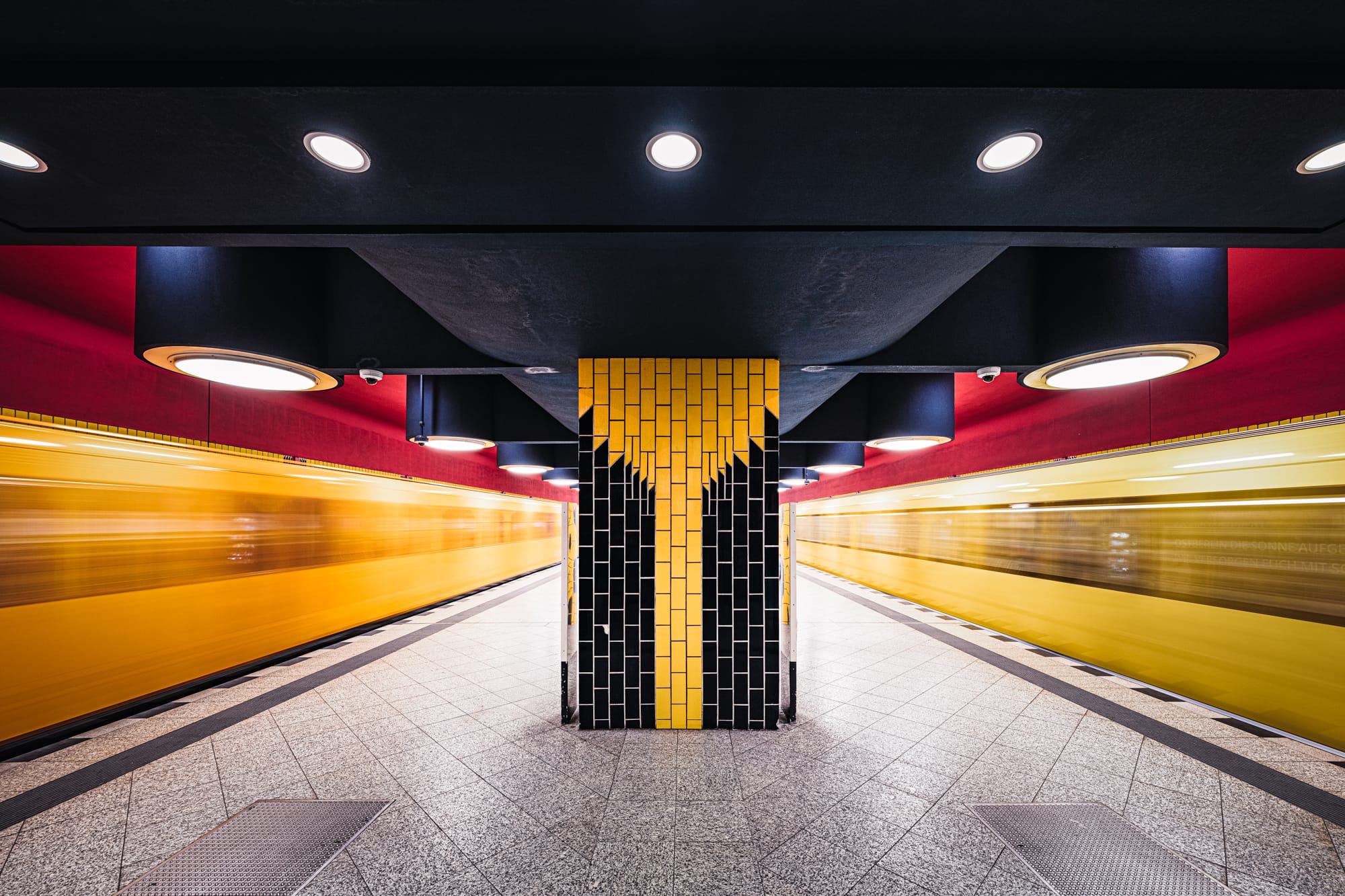
Richard Wagner, Berlin
The photographer emphasizes his goal is to “freeze those moments when built environments reveal human rhythms, urban choreography or spatial perception.” This systematic documentation of underground aesthetics holds not only artistic value but provides rich visual material for urban planning and architectural history research.
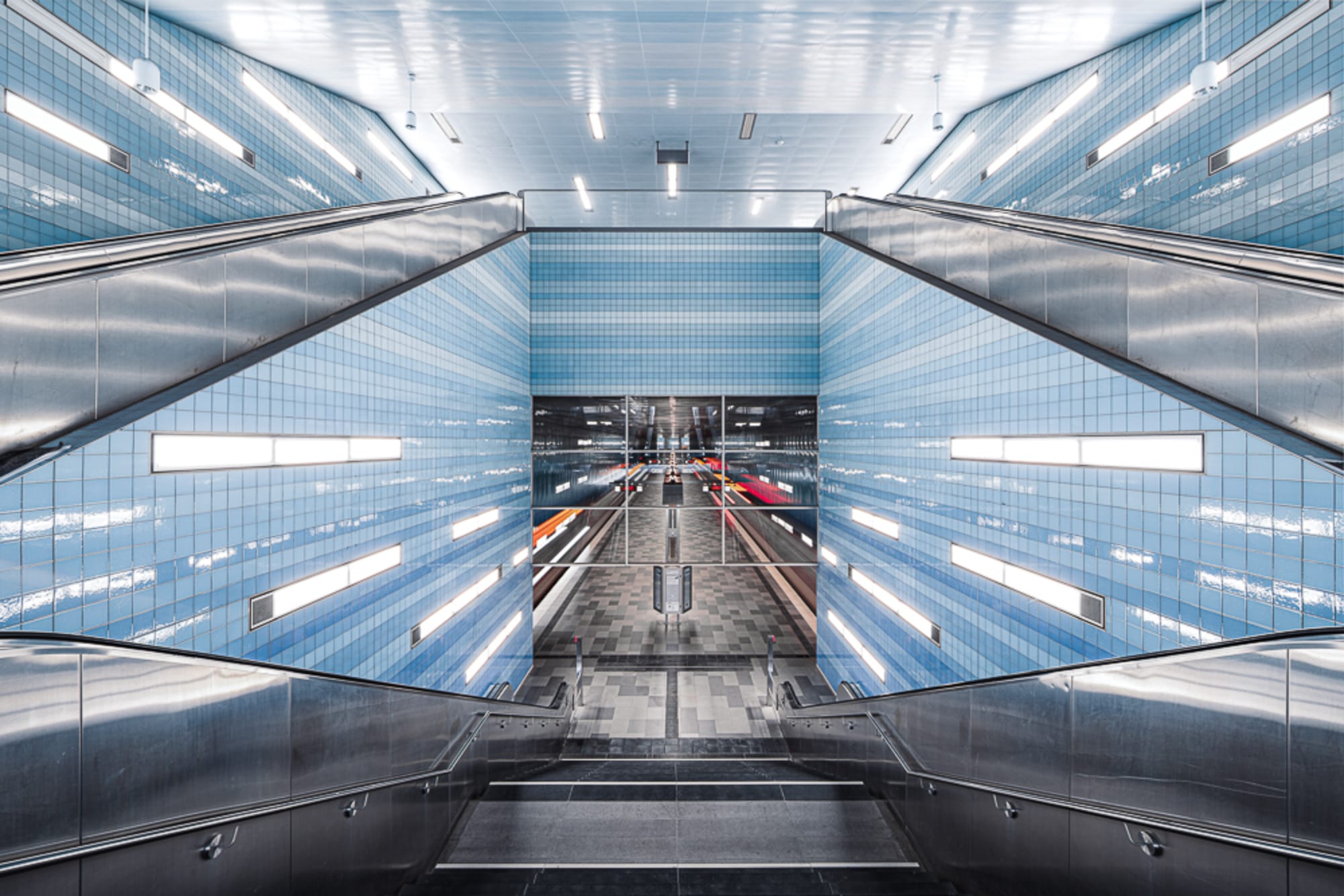
Überseequartier, Hamburg
Significantly, Drutel sees subway stations as “microcosms of global architecture.” Though functionally similar, they display strikingly different appearances due to regional cultural variations. This year he plans to continue the series by documenting three more cities’ subway systems. This sustained, cross-regional project demonstrates his persistent pursuit of architecture as cultural carrier.
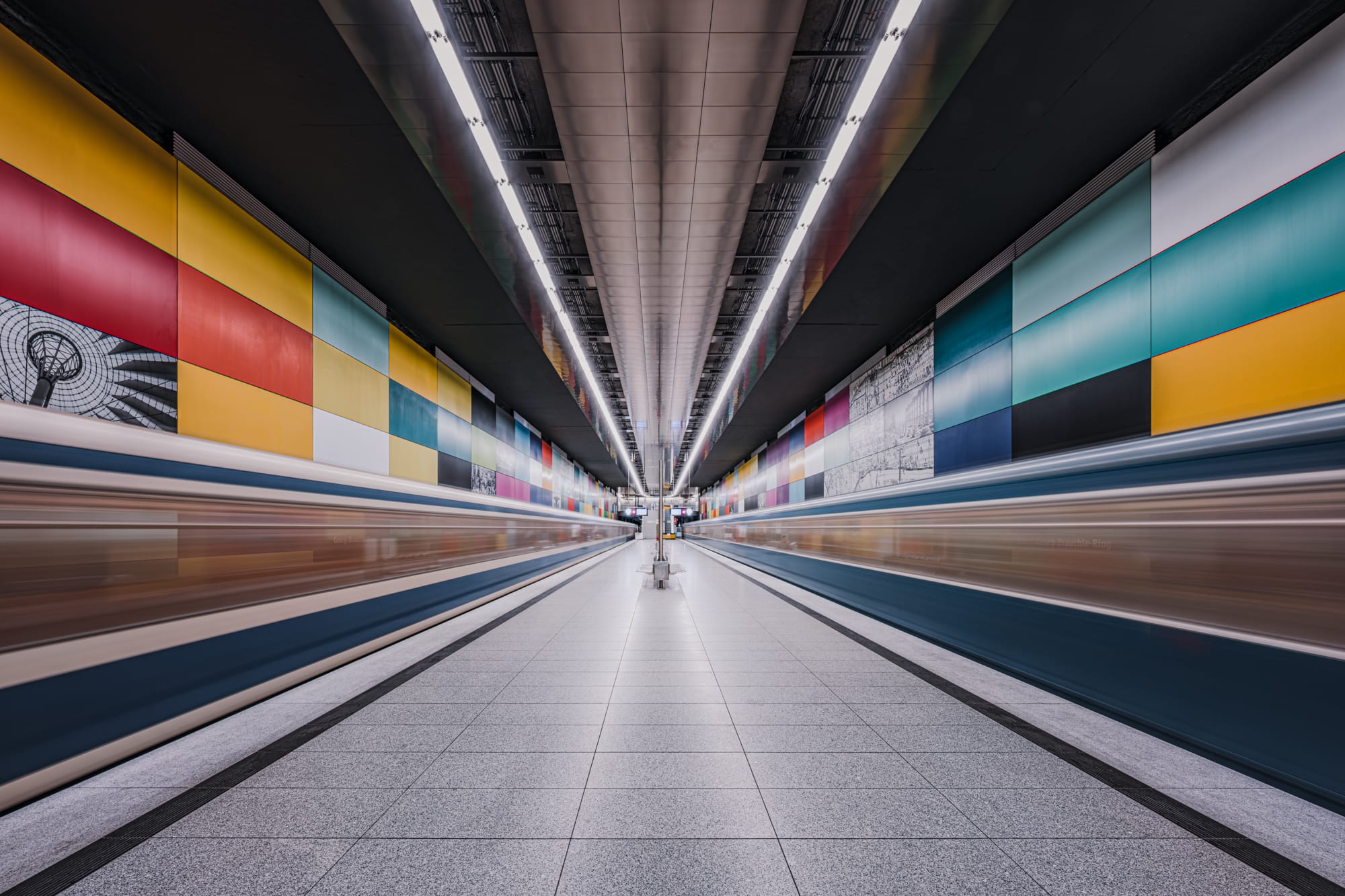
Georg Brauchle Ring, Munich
Marine Macro Photography: Exploring an Unknown Underwater Universe
While Drutel navigates Europe’s underground, Ryo Minemizu conducts a different kind of exploration in Japan’s dark coastal waters. His macro photography magnifies barely visible plankton into astonishing artistic images, revealing the incredible diversity of marine microcosms. Working at depths typically under 25 meters, Minemizu has discovered numerous previously unseen lifeforms in these relatively shallow waters, including larvae of deep-sea fish and special jellyfish species.
All images © Ryo Minemuzo, shared with permission

Larval spiderfish
His work carries not only aesthetic but significant scientific value. In recent years, collaborating with researchers, he has reported multiple discoveries including new hydrozoan species and the peculiar phenomenon of parasitic larvae collectively constructing swimming colonies. These findings have changed scientists’ understanding of marine ecosystems. Minemizu’s photographic practice blurs boundaries between art and science, proving visual documentation can be a powerful scientific tool.
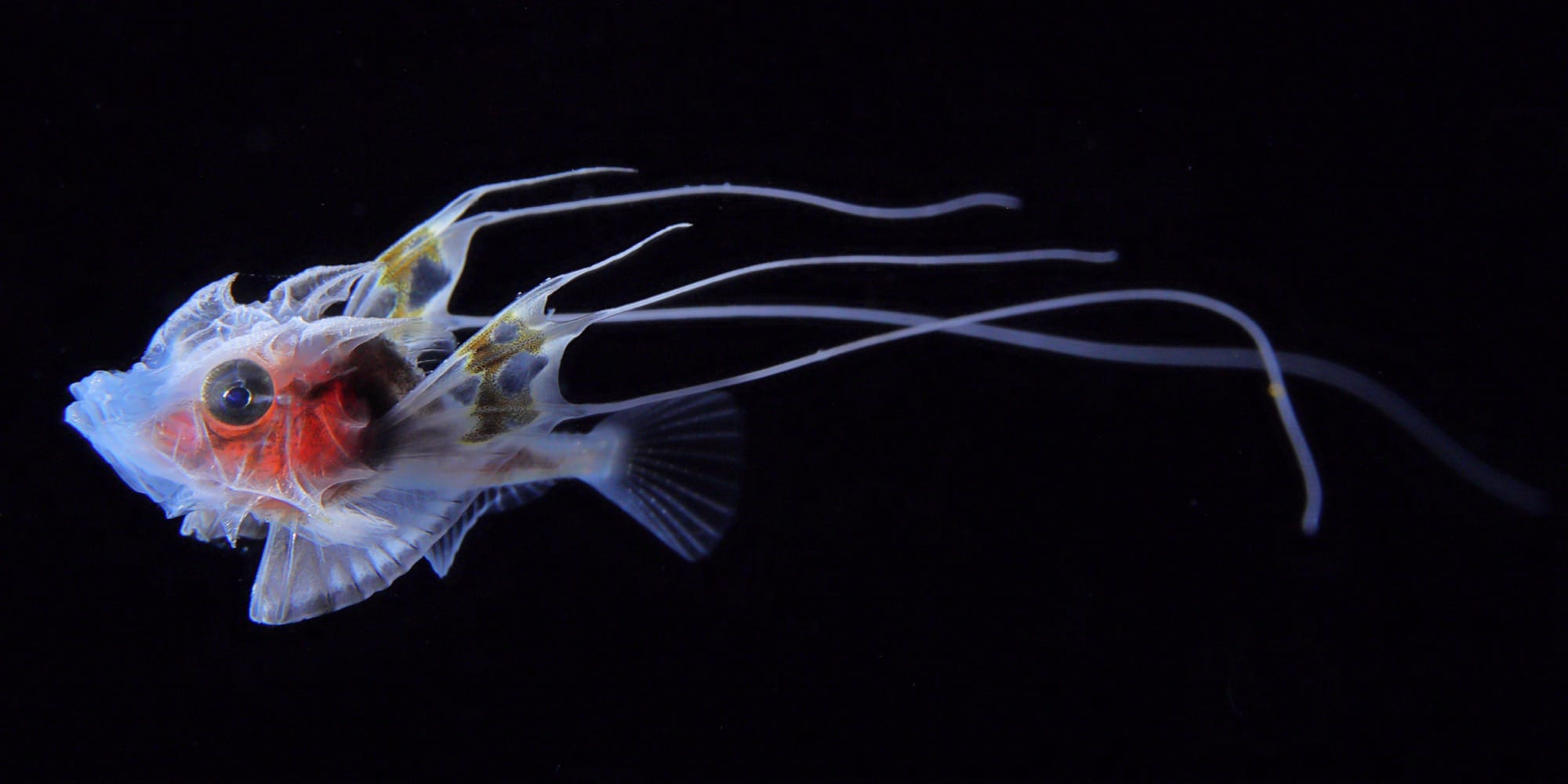
Peristediidae
Yet Minemizu’s lens also captures disturbing scenes – the proliferation of plastic waste in open waters. Even in areas rarely visited by humans, his team frequently finds plastic fragments, some serving as temporary habitats for plankton. This accidental “symbiosis” reveals the profound impact of human activity on marine ecology.

Gymnapogon
Currently, Minemizu is exhibiting these works at Osaka’s 2025 Expo Blue Ocean Dome, hoping to raise public awareness about marine conservation through visual power. Beyond scientific and environmental value, Minemizu invites public participation through his “Blackwater Diving” project. This integration of scientific exploration, artistic creation and public education offers a new paradigm for contemporary photography’s social function.
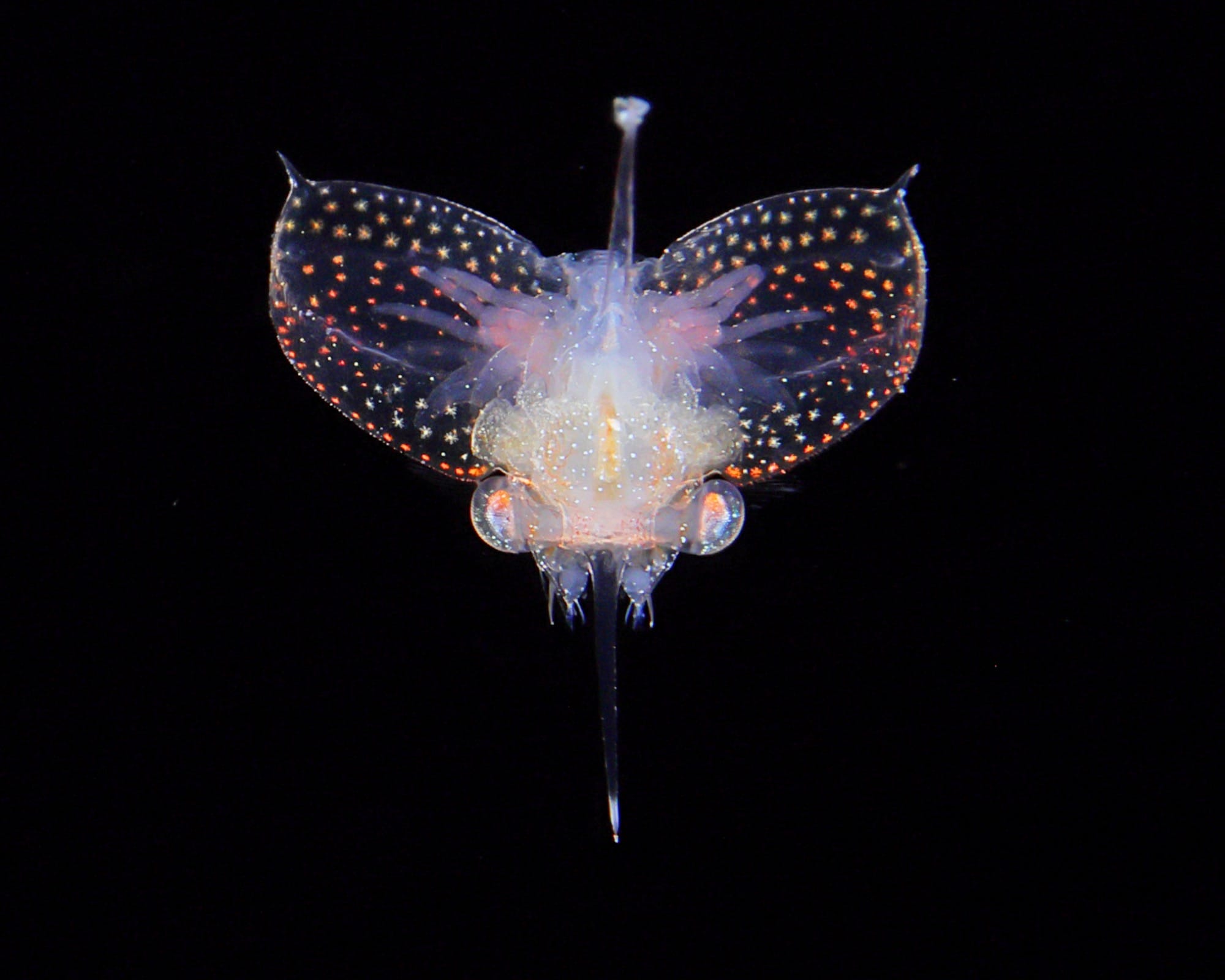
Cupid zoea
Street Photography: Capturing Life’s Absurd Poetry
Unlike Drutel and Minemizu’s systematic explorations, winning entries from the Pure Street photography competition showcase a different photographic philosophy – acute perception of chance and absurdity. Established in 2020, the competition awarded prizes for the first time this year, with works like Ayanava Sil’s “Crown of Fire” and Amy Horowitz’s “Oh, Hello!” demonstrating street photography’s core appeal: finding the extraordinary in the ordinary.
All images courtesy of Pure Street Photography Grant 2025, shared with permission
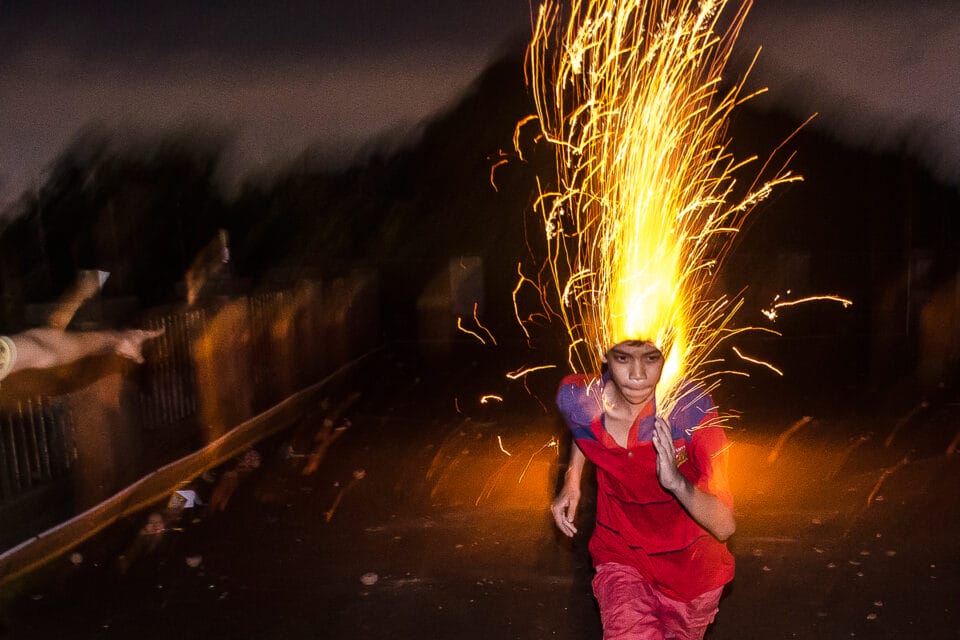
Ayanava Sil (India), “Crown of Fire”
Sil’s image freezes a child running during Diwali celebrations, sparks trailing behind to form a crown-like trajectory, transforming fleeting joy into eternal imagery. Horowitz documents a surreal moment of an elderly woman clutching her purse while making eye contact with a massive snake outside a window. Together these works embody street photography’s essence: perfect timing capturing coincidences and human moments.

Anna Marzia Soria (Italy), “Optical Illusion”
Founders Dimpy Bhalotia and Kamal Kumaar Rao emphasize their mission to showcase “moments stranger than fiction.” This pursuit of accidental poetry in daily life reflects an important shift in contemporary photography – from carefully constructed scenes to celebrating reality’s randomness. Street photography’s charm lies in its irreproducibility; each remarkable moment represents a unique convergence of time, space and human relationships.
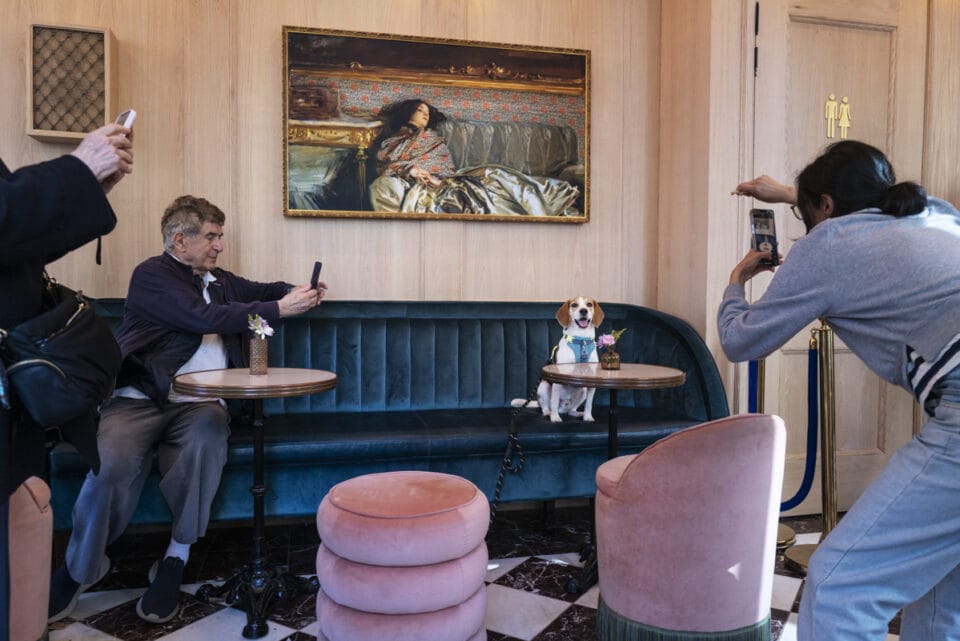
Joanna M. (United States), “Celebrity”
Instrument Interior Photography: Revealing Invisible Structural Beauty
Charles Brooks’s “Architecture in Music” series turns attention to the inner worlds of man-made objects. Using specialized photographic techniques, he reveals instruments’ complex, exquisite internal structures – spaces normally hidden by exteriors that display surprising architectural beauty. From a 1717 Stradivarius violin to a Geminhardt Elkhardt alto flute, Brooks’s work blurs boundaries between instruments and architecture, showing perfect fusion of function and aesthetics.
All images © Charles Brooks, shared with permission
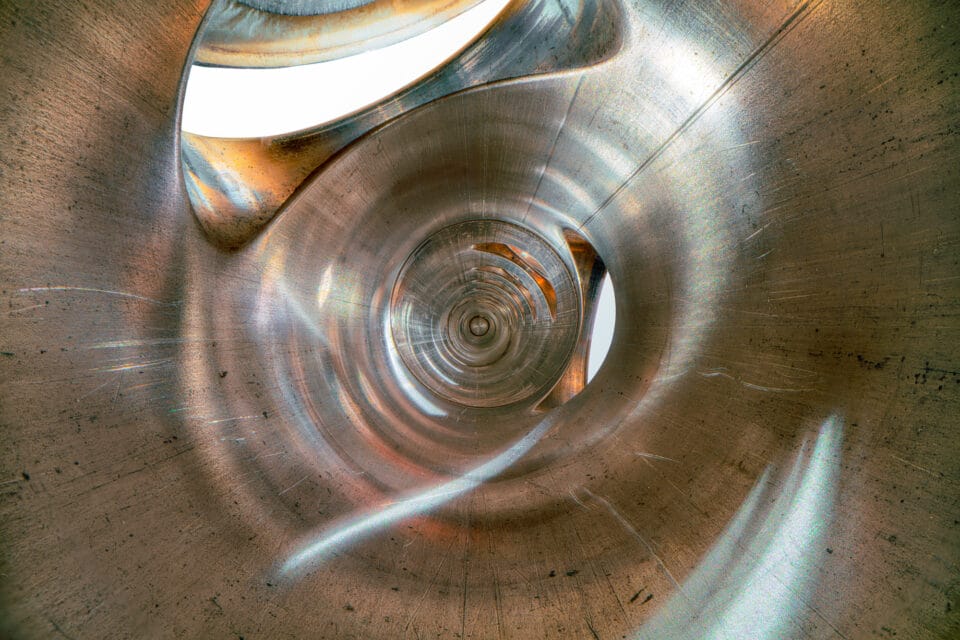
“Geminhardt Elkhardt Alto Flute”
Recently, Brooks extended this concept to scientific apparatus, photographing internal structures of Australia’s synchrotron particle accelerator. This massive machine that accelerates particles to near light speed appears in Brooks’s lens as abstract yet awe-inspiring visual forms. This expansion carries symbolic meaning – from showcasing traditional craftsmanship’s hidden beauty to revealing cutting-edge science’s visual marvels, Brooks’s practice consistently centers on “making the invisible visible.”
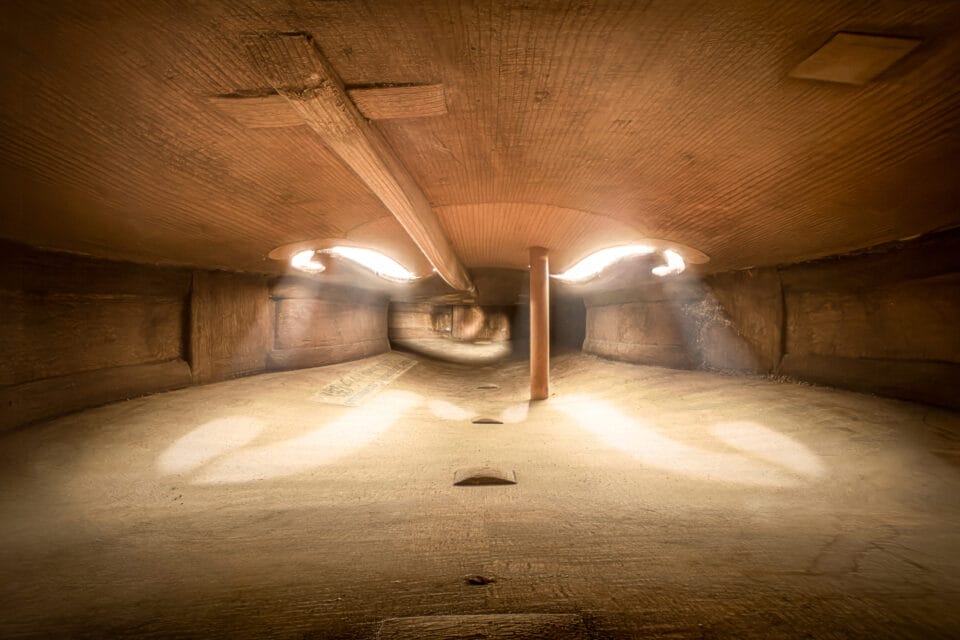
“1717 Stradivarius Violin”
Brooks particularly notes photographing the Stradivarius was both an honor and nerve-wracking experience. This reverence toward historical artifacts reflects his deep understanding of photography as documentation and preservation medium. By exposing these precision instruments’ inner workings, his work provides not only aesthetic pleasure but valuable visual references for instrument manufacturing and scientific apparatus design.
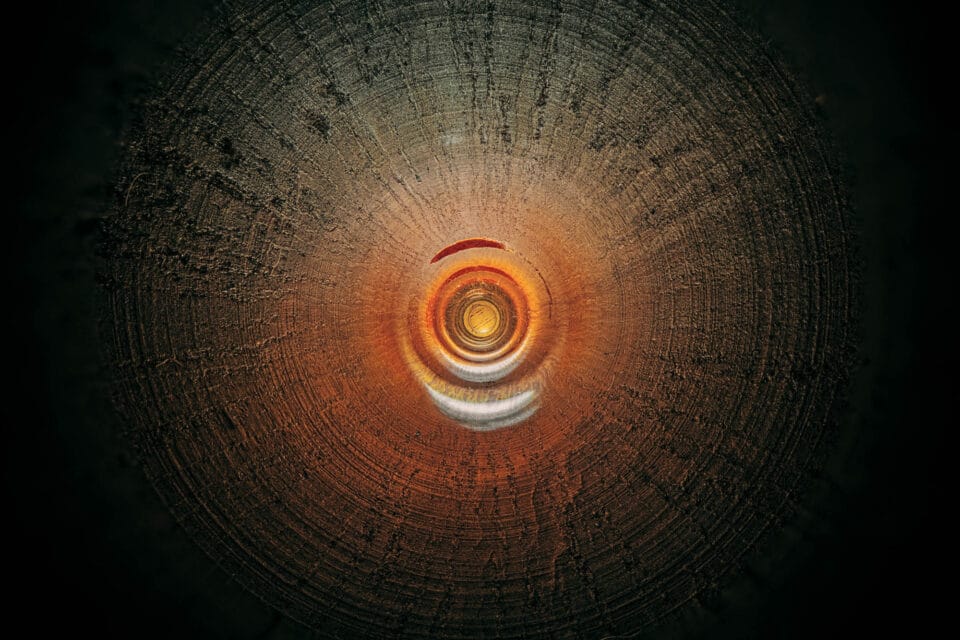
“Larilee Elkhart Oboe”
Contemporary Significance of Visual Exploration
Though differing in subject matter, these four photographers’ practices share core concepts. All attempt through photography to reveal often-overlooked dimensions of reality – whether urban underground architectural order, marine microscopic life, street-level accidental poetry, or man-made objects’ internal structural beauty. Together these explorations constitute a way of understanding the world visually.
In our information-saturated contemporary society, these photographic projects offer an antidote to visual fatigue. They invite viewers to slow down and observe the world’s details and complexity. As Drutel notes, architecture is “often overlooked in daily haste” – an observation applicable across many fields. We live in an era of much seeing but little observation. These photographers remind us that true seeing requires time, patience and focus.
These projects also demonstrate photography’s unique value in interdisciplinary exchange. Minemizu’s work connects art and marine biology, Brooks’s spans music, architecture and physics, while Pure Street entries blend sociological and anthropological perspectives. This cross-boundary quality makes photography indispensable in contemporary knowledge production.

Holger Kunze (Belgium), “The Double”
Balancing Technique, Art and Responsibility
These projects’ success relies on masterful technical execution – Drutel’s precise control of light and symmetrical composition, Minemizu’s macro techniques in dark waters, Pure Street photographers’ perfect timing, Brooks’s lighting solutions for complex interiors. Technical skill forms the foundation, yet in these works it never becomes an end in itself, always serving deeper expressive needs.
Particularly noteworthy are the ethical dimensions in Minemizu and Brooks’s projects. Minemizu documents marine life’s beauty while confronting plastic pollution’s harsh reality; Brooks approaches priceless instruments with professional caution. These considerations show contemporary photographers’ responsibility extends beyond creating beauty to documenting truth, preserving heritage and awakening conscience.
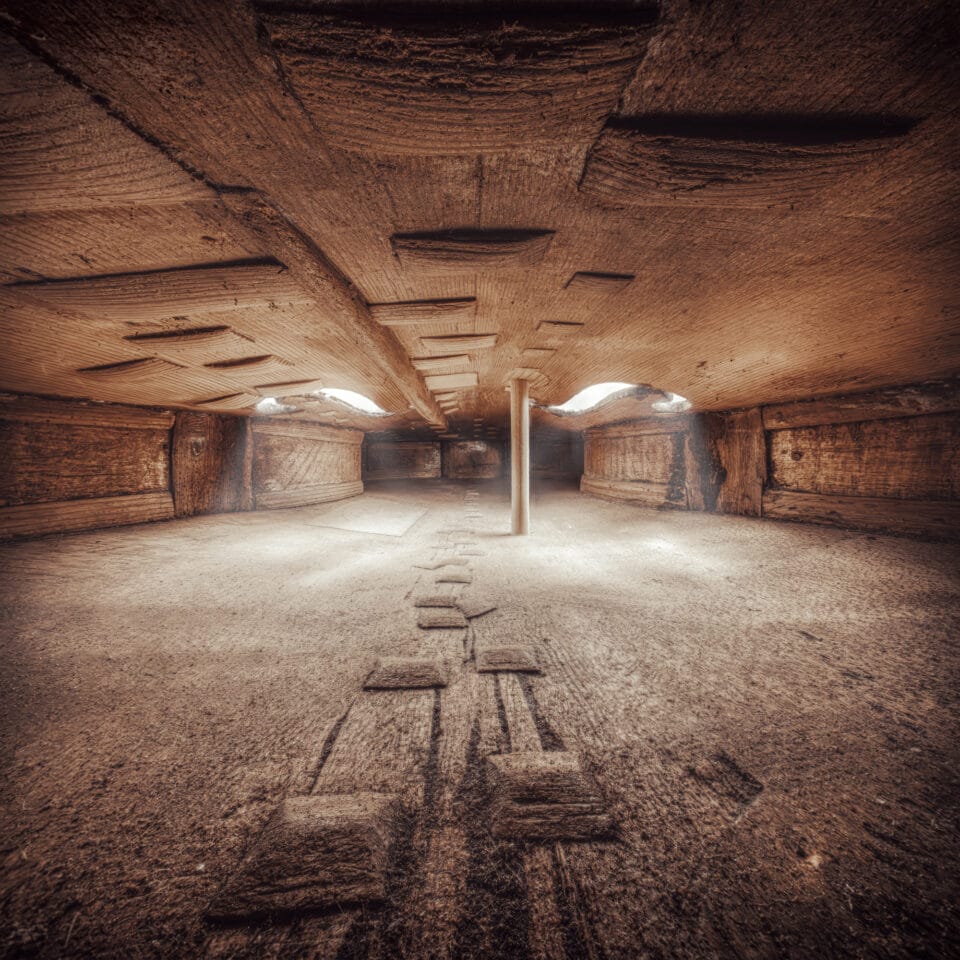
“1770 Chappuy Violin”
Photography as Medium of Discovery and Connection
From European subway stations’ geometric rhythms to Pacific plankton’s bizarre forms, from cities’ absurd street moments to instruments’ intricate interiors, these photographic projects collectively depict a magnificent panorama of our world’s diversity and complexity. They prove photography is not merely a tool for recording reality but a medium for discovery and connection – revealing hidden order and beauty while linking art and science, tradition and innovation, humanity and environment.
In this era of image overload yet meaning scarcity, these photographers’ work reminds us: true photographic art lies not in creating shock but revealing truth; not in displaying the known but exploring the unknown. Whether Minemizu discovering new species in ocean depths or Pure Street photographers capturing surreal street moments, photography’s essence may be this unceasing spirit of exploration – forever curious, forever discovering, forever open to the world’s wonders.
Through their lenses, we see what ordinary vision cannot reach and understand unexpected connections across different fields. This ability to expand cognitive boundaries is photography’s most precious value in contemporary society. When we consider these seemingly disparate projects together, a deeper realization emerges: the world’s various dimensions – nature and culture, art and technology, order and chaos – do not exist in isolation but connect through human curiosity and creativity. And photography stands as one of the most powerful mediums for revealing these connections.
By: Alan Huang composed with GenAI for ArtThat


